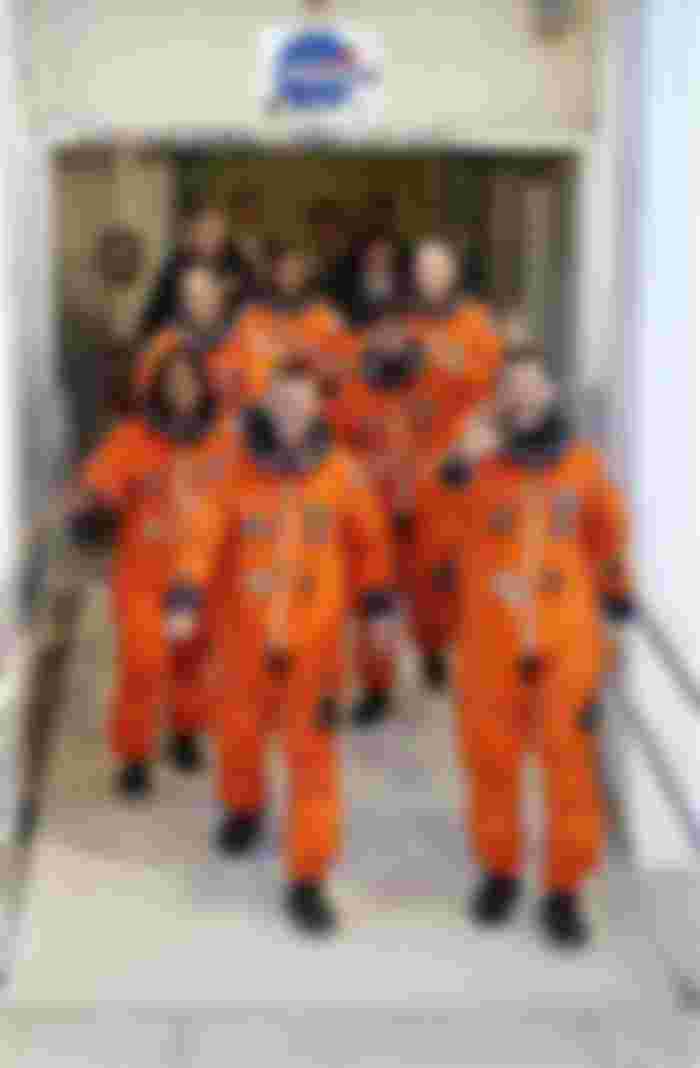
Photo: Space shuttle Colombian astronauts at the start of the journey.
What happened to Kalpana Chawla that day?
The incident took place in 2003. On February 1, 2003, NASA's space shuttle Columbia returned to Earth. Relatives all gathered to welcome the astronauts. Among them was Kalpana Chawla, an Indian astronaut who was born to go to space. She used to tell her friends that she would not be sad if she died in space.
Seven crew members were on the mission:
Rick Husband, Commander
Michael Anderson, Payload Commander
David Brown, Mission Specialist
Kalpana Chawla, Mission Specialist
Laurel Clark, Mission Specialist
William McCull, Pilot
Aylan Radhaman, Payload Specialist
Kalpana Chawla
Kalpana Chawla is the first female astronaut to be born in India. Kalpana's parents lived in Karnal, Haryana, India. Kalpana was born there on July 1, 1971. She took part in two space missions.
He was the youngest of four children. He graduated from Punjab Engineering College with a degree in aeronautical engineering and immigrated to the United States. In the same year, NASA began research on powerlift computational fluid dynamics.
The first opportunity to go into space as an astronaut came in 1998. Columbia took part in the STS-87 mission aboard the spacecraft. They orbited the Earth 252 times in two weeks.
Space shuttle
Previously, spacecraft could not be used more than once. At the end of the mission, a capsule would fall into the sea. From there, the astronauts would be rescued. But the space shuttle technology that NASA brings can be used again and again. These can come.
Danger of spacecraft
Fuel like petrol and diesel cannot be used in spacecraft. Liquid hydrogen and oxygen have to be used here. Many say it is a lot like sitting on an atomic bomb.
Again, due to the extreme cold of these fuel tanks, ice accumulates on them. To avoid all these problems, special type of thermal foam has to be used.
When the spacecraft enters the Earth's atmosphere at high speed, it gets heated by the collision with the air. In this case also, we want a heat shield.
Columbia Mission
The mission of the Columbia shuttle that caused the disaster was called STS-107. Columbia left Earth for the International Space Station on January 17, 2003. The name of the mission was STS-107. However, the main purpose of the STS-107 mission was to conduct some basic research.
They all worked together in turns and conducted about 80 experiments non-stop. Among them were various experiments in life sciences, flowing physics and physics.
The noise has been there since the launch
The hit-shield damage was captured on camera during the launch of the spacecraft. The incident occurred 72 seconds after the spacecraft was launched. Insulator foam hit the left wing of Columbia. The detectives wanted to help NASA by taking better pictures using cameras. But NASA officials ignored that request.
The disaster occurred at 9 am
On February 1, the spacecraft Columbia took off as normal at the Kennedy Space Center. Around 9 a.m. local time, the mission control began receiving unusual information. Temperature readings were not available from the left wing of Columbia. Contact was made at 6:59:32 a.m. when Commander Rick Husband was speaking.
Columbia was near Dallas at the time, traveling at 18 times the speed of sound. It was about 61,180 meters above the ground at the time. Attempts to contact Columbia several more times failed, but it was scheduled to land on the runway 12 minutes later. A phone call came to control, a local television channel was broadcasting a video of the wreckage of the spacecraft or shuttle.
The wreckage spread over an area of about 5,000 square kilometers in East Texas. After weeks of searching, NASA recovered about 74,000 pieces or fragments of Columbia, about 40% of Columbia. Among them were the remains of astronauts. DNA tests later confirmed the identity.
In 2008, NASA released details of the Columbia disaster, especially the last five minutes. It is said that the astronauts probably survived the collapse of Columbia, but died when the pressure subsided and their cabin collapsed.
After the disaster, questions were raised about NASA's spacecraft system. For more than two years, no NASA spacecraft or shuttle went into space. NASA enlisted the help of Russian spacecraft to keep in touch with the space station.
The cause of the disaster
At the end of the investigation, it was said that the problem was in the heat shield. The heat shield was damaged during the launch of the spacecraft. As a result, Columbia could not handle the extreme heat when it entered the Earth's atmosphere. The problem was already known to NASA. The uproar began. The United States Congress also debated this.
It crashed into the skies of Texas and Louisiana as it entered the Earth's atmosphere. A special type of foam is used to protect the spacecraft from high temperatures. However, during launch, the foam falls off and hits the left wing.
When it enters the atmosphere, hot air enters through the broken part of the wing and destroys its structure. At one stage, the spacecraft itself collapses.
